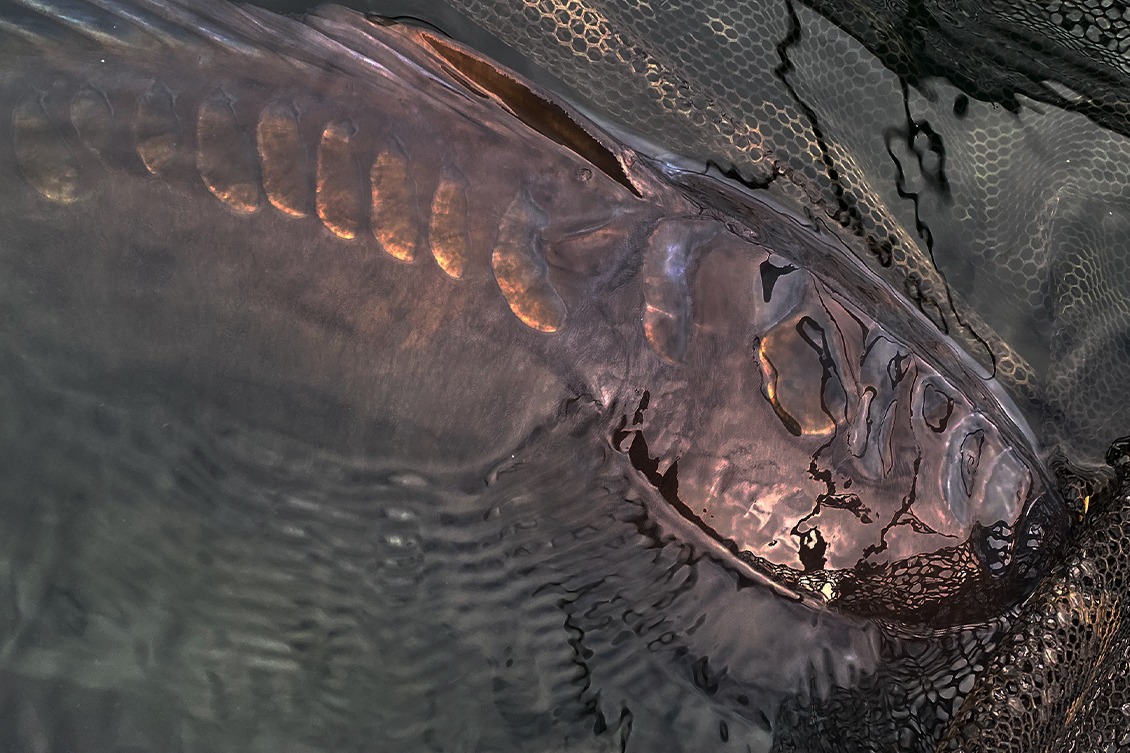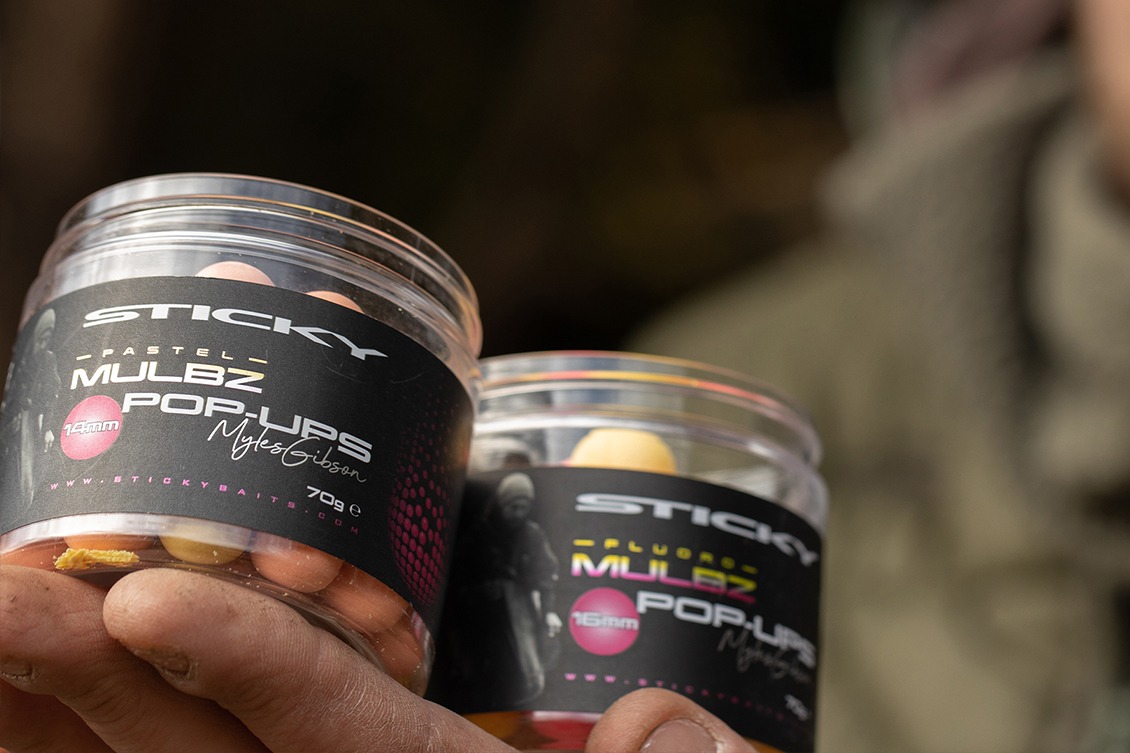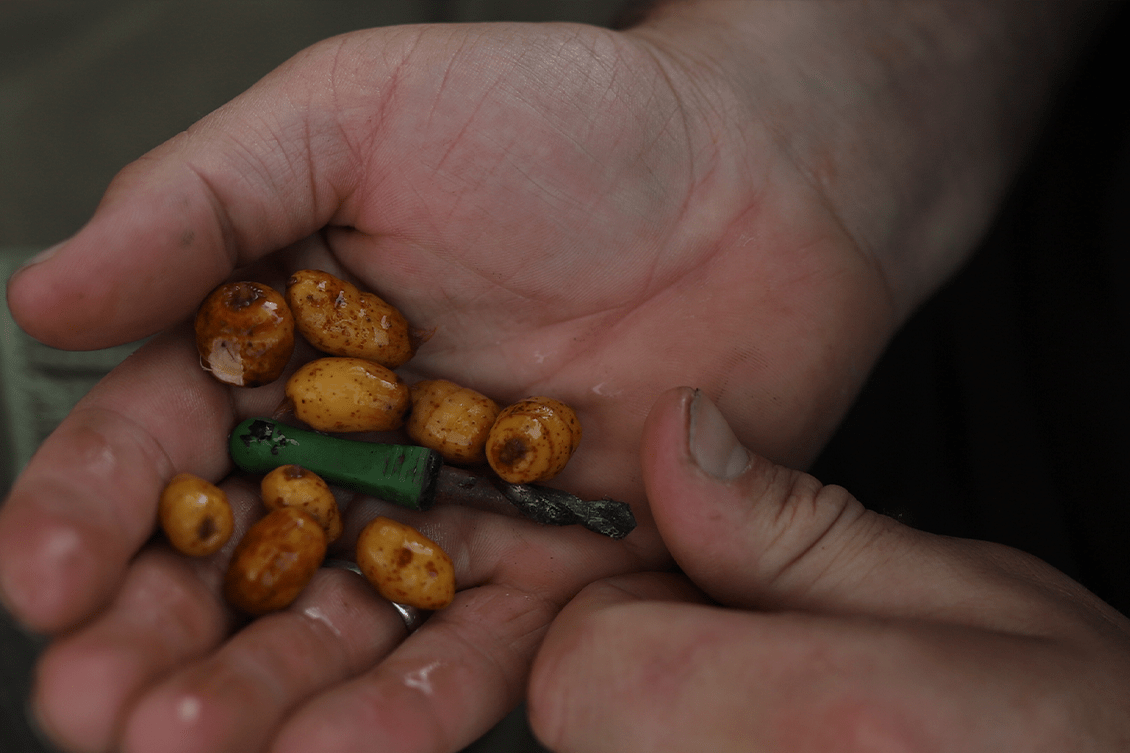
Scott Lloyd reveals his top tips for capitalising on floater fishing opportunities, said to be one of the most exhilarating forms of angling!
Floater fishing really does come into its own at this time of year. The water is really warm, and as a result the carp are up and about, exploring and enjoying the summer sunshine.
People often associate floater fishing with really hot days and while they can be good, carp will often be up in the water in rainy conditions too. First light in particular is a great time to be out floater fishing. The light levels are less harsh, the fish are often feeding at that time and it can be rewarding getting up really early.
Once you have looked hard enough and found a few fish to angle for, it is then a case of beginning to feed them some bait. I start off by mixing 6mm and 11mm Krill Floaters. The fish love the smaller ones, but they can become pre-occupied. The 11mm ones are the same size as my hookbait, so I feed much more of those in the latter stages of feeding, to ensure the fish don’t get too pre-occupied on small baits.


The Krill Floaters have transformed my surface fishing in recent years, firing up a feeding response like I have never seen before. Once a carp latches on to its first one, it will just keep eating them. Put simply they are a premium floating pellet that undergoes a two-stage coating process, meaning they leak off various feeding stimulants; the fish simply adore them.
In fact, I remember a session on Christchurch one year where they were actually passing the floaters on the mat, which is something that I had never seen before. This kind of feeding response is what you are looking for and only when you have a number of fish slurping down each bait is it time to cast the rig in.
I tend to feed with a catapult to start with, unless the fish are holding out at range. It is always best to fish in close as when you catch one, the fish will slowly push out further and further. You can then put a bigger controller on and use a Spomb to feed, but doing this to start with will hinder your chances of getting a bigger hit of fish.
The Krill Floaters have transformed my surface fishing in recent years, firing up a feeding response like I have never seen before

One of the biggest problems when floater fishing is the bird life. They can be a real problem and there is only one way of getting round it and that is to feed them off. If the birds are an issue, I make sure to have some cheap dog biscuits and even reduced priced loafs of bread. I use this to feed the birds and if you keep going, eventually they will fill up and leave you to it. The amount will depend on the venue and how many birds are present. If there are literally hundreds of ducks and geese and that doesn’t include the gulls, it may be hard to feed them off.
The other tricky factor is the wind and how it can drift the bait away from the swim and prevent you from seeing the hookbait. If you add some Cap-Oil to the Floaters, the rich, spicy fish oil not only increases the attraction of the bait, it creates a large flat spot over the area.


Hookbait choice is so important and is often the reason for the fish ignoring or rejecting the hookbait, which they have an incredible ability to do. I always used to soak a pop-up in some water, just to reduce its buoyancy and make it behave like one of the freebies. However, in recent times I have used the Krill Floater hookers, which not only match the freebies in colour, taste and smell, they also emulate the buoyancy of a freebie once it has been hooked on.
Once the bait is out there, I find it important to study the hookbait. Ignore everything else that is going on around you and focus on that. The moment the fish takes the bait in, strike! They will suck the bait in and some will reject it if they think something is wrong. By striking you prevent them from doing that and you will convert more opportunities into bites.
Floater fishing can be hard work and requires a lot of patience, but if you keep working at it, it will happen. All those hours in the day when nothing is happening on the bottom can be spent floater fishing and you may only get one chance, but it will be one more than you would have just leaving the rods out on the bottom. Even on the most riggy and tricky lakes, carp will eat off the top and on places where people don’t fish on the surface, they can be even more vulnerable.
Scott Lloyd’s Top Tips

Locating the carp should always be your first point of call

Prepare your 6mm and 11mm floaters to get an instant feeding response from the carp

Add cap oil to the mix to boost attraction and help flatten the surface

Use a catapult to aid accuracy when feeding your floaters

Regular feeding is key to allow the carp to build their confidence

Use the matching floater hookers to trick even the wariest of carp














